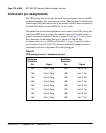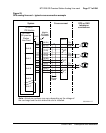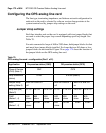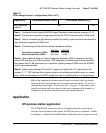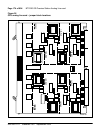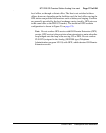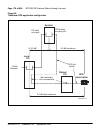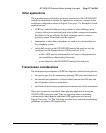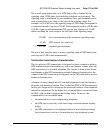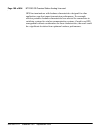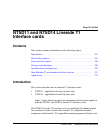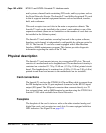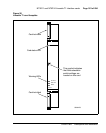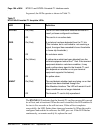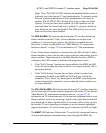
Page 178 of 894 NT1R20 Off-Premise Station Analog Line card
553-3001-211 Standard 2.00 September 2004
Port-to-port loss
Loss is inserted between OPS analog line card ports and other ports in
accordance with the loss plan. This plan determines the port-to-port loss for
each call.
When a port is configured for CLS OPS, loss is programmed into the OPS
analog line card on a call-by-call basis. When configured for CLS ONS, an
OPS analog line card port is programmed to a value that is fixed for all calls.
The loss in the other port involved in the call can vary on a call-by-call basis
to achieve the total loss scheduled by the plan.
For satisfactory transmission performance, particularly on connections
between the public network and an OPS termination, it is recommended that
facilities conform to the following:
• Total 1 kHz loss from the local serving CO to the OPS terminal should
not exceed 7.0 dB. The total loss in the facility between the PBX and the
terminal must not exceed 4.5 dB. See Figure 25 on page 176.
The following requirements are based on historic Inserted Connection
Loss (ICL) objectives:
— PBX – CO trunk: 5 dB with gain; 0 – 4.0 dB without gain
— OPS line: 4.0 dB with gain; 0 – 4.5 dB without gain
Economic and technological changes have led to modifications of
these objectives. But since the loss provisions in the PBX for OPS
are constrained by regulatory requirements as well as industry
standards, they are not designed to compensate for modified ICL
designs in the connecting facilities.
• Nortel Networks recommends that the attenuation distortion (frequency
response) of the OPS facility be within ±3.0 dB over the frequency range
from 300 to 3000 Hz. It is desirable that this bandwidth extend from 200
to 3200 Hz.
• The terminating impedance of the facility at the OPS port be
approximately that of 600 ohms cable.
If the OPS line facility loss is greater than 4.5 dB but does not exceed 15 dB,
line treatment using a switched-gain Voice Frequency Repeater (VFR) will
extend the voice range.



